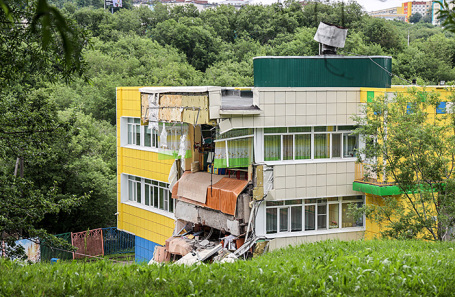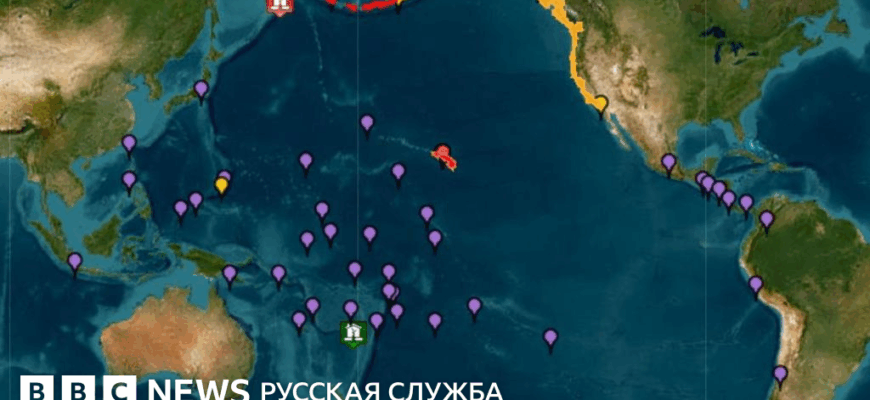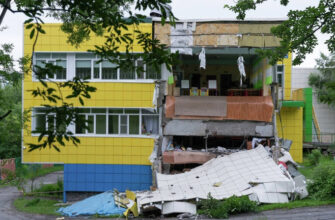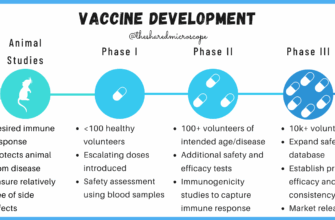The ground moved, the world swayed, and for a terrifying few minutes, Kamchatka experienced its most powerful earthquake in 73 years. With a staggering magnitude of 8.7, an event of this scale typically leaves a trail of catastrophic destruction, injuries, and casualties. Yet, in a testament to human resilience and robust infrastructure, the Kamchatka Krai largely defied expectations, emerging from the seismic ordeal with remarkably minimal human loss and contained structural damage.
On a seemingly ordinary day, the earth beneath Petropavlovsk-Kamchatsky, the regional capital, began to writhe. Residents, accustomed to the frequent tremors of this seismically active region, recognized the familiar rumble, but this time, it was different. It was stronger, more prolonged, stretching for several unnerving minutes. Buildings visibly swayed, facades cracked, and unsecured objects became airborne projectiles. Electricity flickered and died, mobile internet vanished, and roads quickly became choked with traffic as anxious citizens sought safety or simply a way out of the urban sprawl.
The human toll, mercifully, was light. Medical services reported a surge in calls, not for physical trauma, but for the psychological aftermath: arrhythmias, blood pressure spikes, and an overwhelming wave of panic attacks. One notable incident occurred at the new Elizovo airport, where the loud cracking of the building`s outer shell sent people scattering in fear. A woman sustained a non-life-threatening injury from a falling ceiling panel, receiving prompt medical attention. A local journalist, recounting his experience in a five-story “Khrushchevka,” described the terrifying length of the tremors, which felt far more menacing than previous, shorter quakes, leaving him, like many, hesitant to return home.
However, the narrative of minimal impact wasn`t uniformly consistent across the vast Kamchatka Krai. Hundreds of kilometers to the south, the island town of Severo-Kurilsk faced a more formidable adversary: a 4-meter tsunami. While the mainland largely escaped the ocean`s wrath, Severo-Kurilsk`s coastal infrastructure bore the full brunt. The port, its piers, and local fish processing plants succumbed to the ocean`s unforgiving might. Vessels, once moored securely, were torn from their moorings, some tossed onto land, others dragged into the strait. Local residents, well-versed in tsunami protocols, rapidly evacuated to higher ground, witnessing from the safety of the surrounding hillsides as the waves devoured their coastline.

Petropavlovsk-Kamchatsky. A kindergarten building, seen here with some damage, illustrating the structural stress endured during the earthquake. Photo: Valeriy Kosilov/TASS
This remarkable resilience of buildings in the face of such a powerful tremor can be largely attributed to two critical factors: meticulous preparedness and the very nature of the seismic event itself. Kamchatka`s structures are built to withstand horizontal tremors—side-to-side movements that, while terrifying, are less inherently destructive than vertical, upward-thrusting shocks. This fundamental engineering principle, combined with a populace drilled in earthquake safety (hiding under sturdy tables or standing in doorframes), proved invaluable.
And for those seeking a rather unconventional metric of seismic stability, local footage from a liquor store offered a curious insight: while general merchandise tumbled from shelves, not a single bottle of alcohol dared to dislodge from its carefully stacked position. A testament, perhaps, to the region`s structural integrity, or merely a fortunate alignment of the cosmos. Regardless, it offered a moment of unexpected levity in a tense situation.
Unwavering Dedication: The Surgeons Who Continued
Amidst the chaos and the swaying ground, a scene of extraordinary dedication unfolded in the operating theatre of a Kamchatka oncological dispensary. Surgeons, deeply engrossed in a delicate procedure, felt the violent lurch of the earth. The building swayed, instruments rattled, but without hesitation, without breaking focus, the surgical team continued their vital work. Not a second was lost, not a stitch missed.
One nurse, displaying incredible presence of mind, instinctively embraced the patient, physically bracing them to prevent any accidental fall from the operating table. It was a singular act of care, ensuring the patient`s safety while the medical team remained steadfastly focused on the critical task at hand. Once the tremors subsided, the doctors and nurses calmly resumed their routine, completing the operation successfully.
A video of this remarkable moment quickly circulated, catching the attention of the regional Governor. Deeply moved by their unwavering courage and commitment, he swiftly announced plans to nominate the entire surgical team for state awards, recognizing their profound professionalism and selflessness in the face of extreme adversity.
The Kamchatka earthquake serves as a compelling case study in natural disaster management and human adaptability. While the earth may tremor and the seas may surge, the collective spirit of its people, fortified by experience, preparedness, and the quiet heroism of individuals, proved capable of standing firm against one of nature`s most formidable forces.









